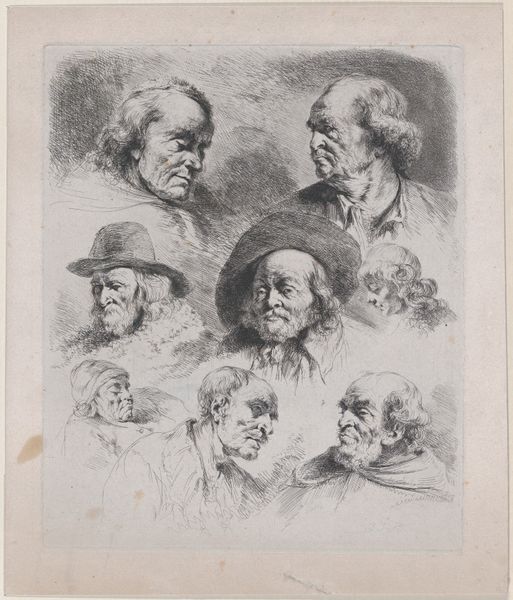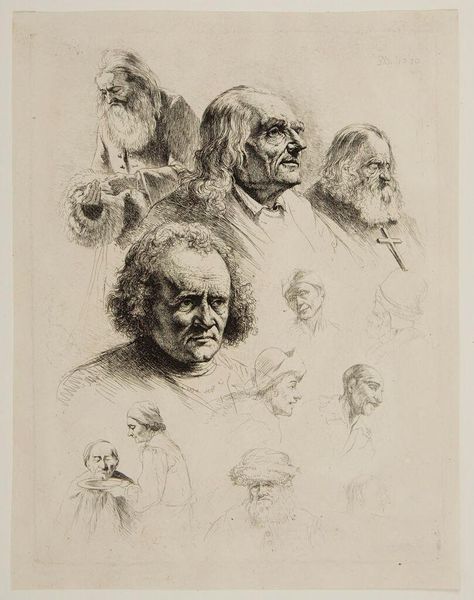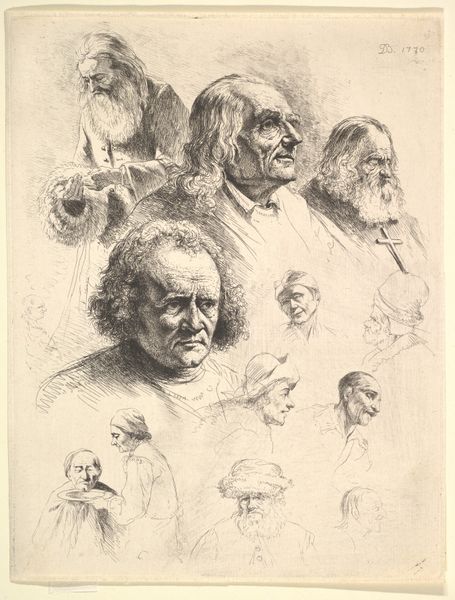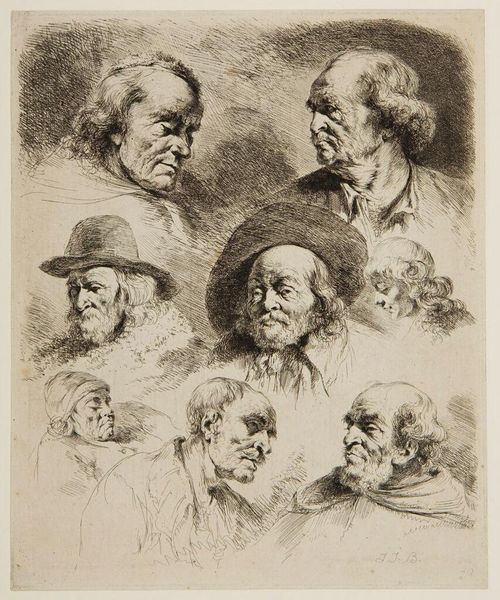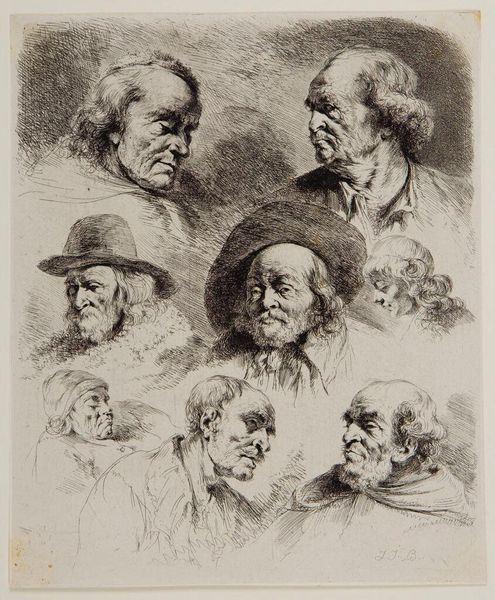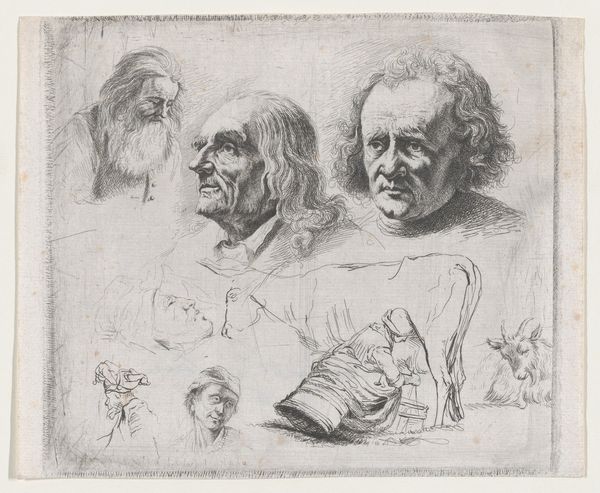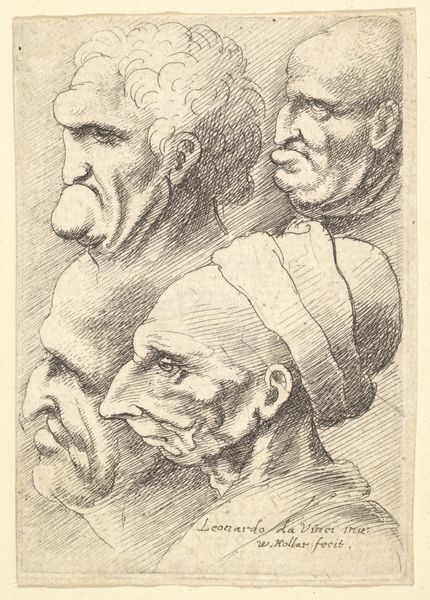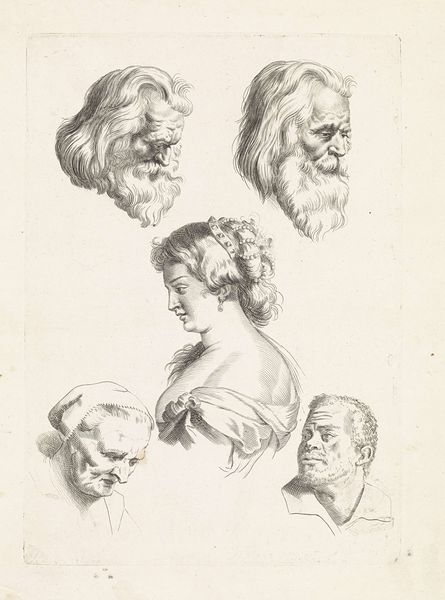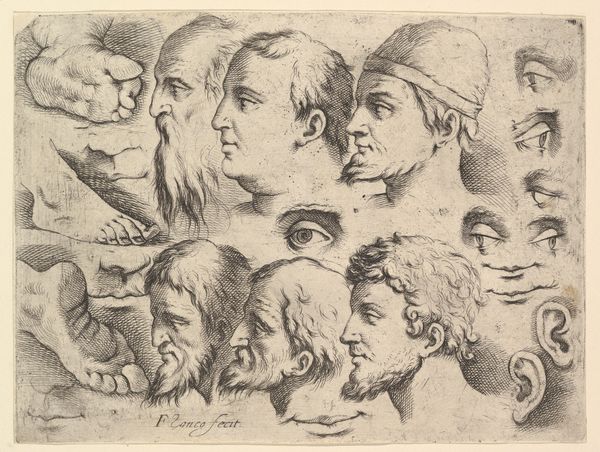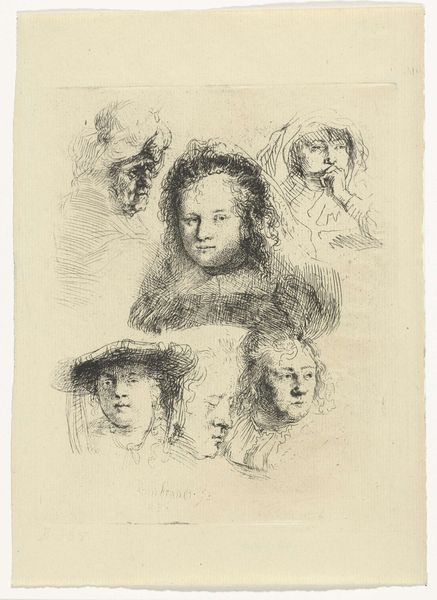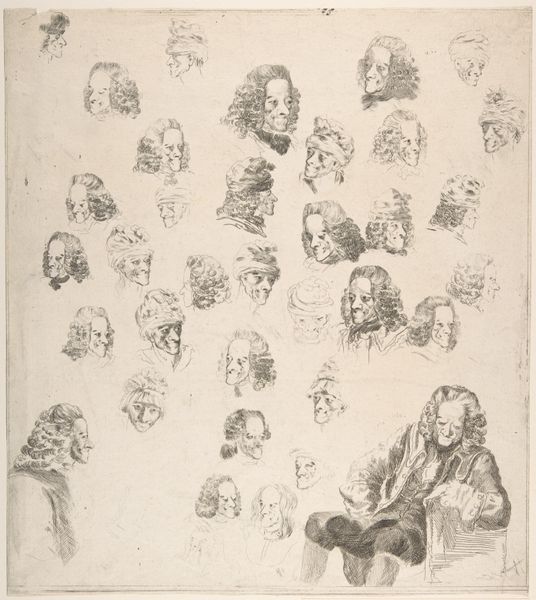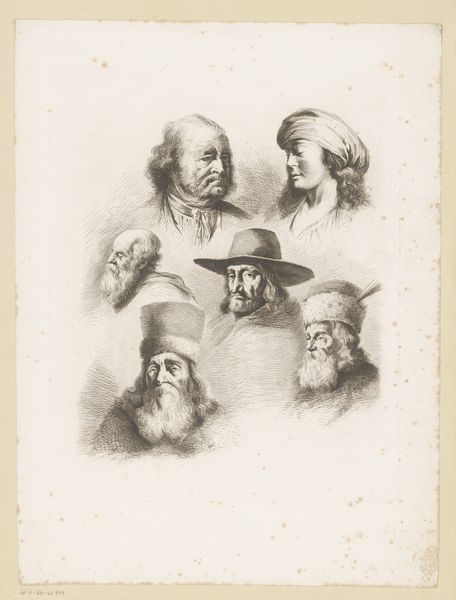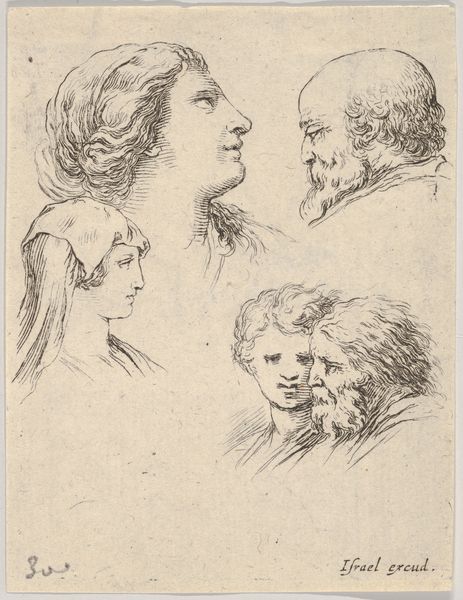
Compositie met zes hoofden van mannen en vrouwen met gesloten ogen 1815 - 1844
0:00
0:00
drawing, print, etching
#
portrait
#
drawing
#
facial expression drawing
# print
#
etching
#
old engraving style
#
personal sketchbook
#
portrait reference
#
portrait drawing
#
history-painting
#
academic-art
Dimensions: height 237 mm, width 186 mm
Copyright: Rijks Museum: Open Domain
Curator: What a striking etching. Here we have Ignace-Joseph de Claussin's "Compositie met zes hoofden van mannen en vrouwen met gesloten ogen," likely created sometime between 1815 and 1844, now residing here at the Rijksmuseum. Editor: My initial feeling? It's a powerful study in pensiveness. Each face, etched with such delicate lines, seems lost in its own internal world. The closed eyes amplify that sense of introspection. Curator: Precisely. Closed eyes are often interpreted as symbolic, representing inner vision, a retreat from the external world, even death. De Claussin invites us to consider the psychological landscapes contained within these individuals. Were they specific people? Archetypes? The absence of open eyes, directing our gaze outward, subtly turns the focus inward to ponder questions of being. Editor: It does prompt a sense of communal, societal contemplation, as it resembles a page from a personal sketchbook meant for circulation amongst other artists, or perhaps even something from a phrenology textbook! What do we know about the historical context in which it was produced? The rise of Romanticism? Interest in scientific disciplines concerning the brain? Curator: Both play a significant part in the production of these studies, the piece itself falls into a fascinating historical intersection of artistic styles, especially concerning the revival of interest in etching as a fine art print, distinct from mass-produced reproductions, but that can still allow wider accessibility. Its placement within the museum setting can sometimes highlight these tension-filled conversations about art in wider culture and the public role in valuing different forms of art practices and making! Editor: Interesting, I suppose these quiet figures spark so much discourse for how seemingly uncomplicated and silent they are. It shows how artworks gain unique voices based on the context around them. Curator: Agreed. It really emphasizes the enduring power of simple forms. I do hope our listeners were just as moved and pensive.
Comments
No comments
Be the first to comment and join the conversation on the ultimate creative platform.
